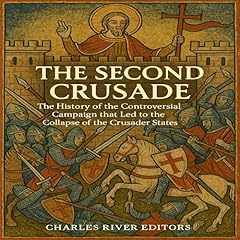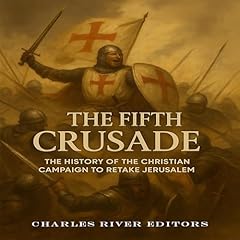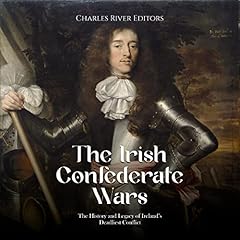
The Khmer Rouge: The Notorious History and Legacy of the Communist Regime That Ruled Cambodia in the 1970s
Impossible d'ajouter des articles
Échec de l’élimination de la liste d'envies.
Impossible de suivre le podcast
Impossible de ne plus suivre le podcast
Acheter pour 6,24 €
-
Lu par :
-
Colin Fluxman
À propos de ce contenu audio
The reign of the Khmer Rouge, a Cambodian communist regime, began on April 7, 1975 as Khmer Rouge militants entered the Cambodian capital of Phnom Penh, ultimately gaining control and forcing out its residents. For the next four years, the regime would remain in power and commit what is now referred to as the Cambodian Genocide. Their reign would result in economic turmoil, cultural destruction, and mass death, impacting Cambodia to this day. That legacy continues to be the subject of discussion among governments and academics, who would debate not only their intentions and actions but also the appropriate course of pursuing legal action against its leaders.
The Communist Party of Kampuchea, also known as the Khmer Rouge, took control of Cambodia’s capital city of Phnom Penh on April 7, 1975. Upon seizing Phnom Penh, the Communist forces of the Khmer Rouge began to eliminate all aspects of public life that were viewed as contrary to communist ideals. Military forces began to seize all private property, outlawed religion, repealed all existing laws, eliminated markets and currency, closed public gathering spaces, and declared all anti-regime activity as treason.
The existing borders of Cambodia, then known as Democratic Kampuchea, were immediately closed by the military. International citizens were not permitted to enter Cambodia, and, more importantly, Cambodians were not permitted to exit. Citizens of all large cities, such as the capital of Phnom Penh, were quickly moved to the countryside to work in forced labor camps.
The ultimate goal of the Khmer Rouge regime was to return Cambodia to a nation centered around agriculture that lacked social classes and individuality. As a result, Pol Pot aimed to eliminate any groups he viewed as a barrier to achieving that vision, which mostly included ethnic, religious, and political groups within Cambodia. These groups ranged from Buddhist Monks and Muslim Cham to ethnic Thais and Vietnamese. Ethnic Khmer were also targeted, mainly for perceived political beliefs or activities. Over the course of about four years, millions of Cambodians would die at the hands of the Khmer Rouge regime. In all, the rise of the Khmer Rouge to power resulted in the deaths of over a million Cambodian residents and the diaspora of about 1.5 million Cambodians between 1975 and 1979. It would come to be known as the Cambodian Genocide.
The Khmer Rouge: The Notorious History and Legacy of the Communist Regime That Ruled Cambodia in the 1970s chronicles the destructive history of the regime and their impact on the region.
©2018 Charles River Editors (P)2018 Charles River Editors
Vous êtes membre Amazon Prime ?
Bénéficiez automatiquement de 2 livres audio offerts.Bonne écoute !


















